Madinat al-Zahra, a dazzling series of palaces full of treasures never seen before, was lost for over 1,000 years. It is now a UNESCO World Heritage Site in Cordoba.
By Nick Nutter | Updated 2 Jul 2024 | Córdoba | Places To Go |
Login to add to YOUR Favourites or Read Later

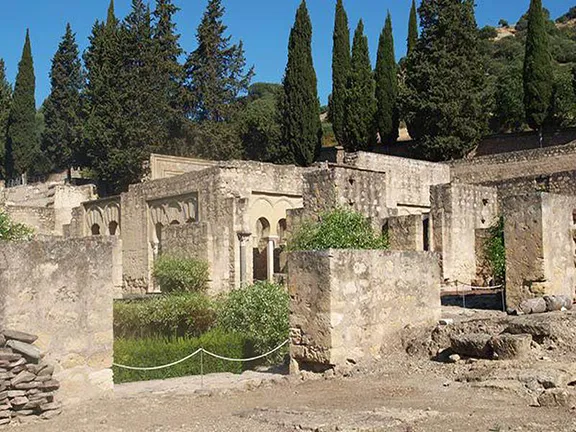
Madinat al-Zahra
This is the story of a city - a story that could have been written for ‘The Arabian Nights’, a city that was built in 40 years, flourished for 40 years, and then perished in flames and was forgotten for one thousand years. It was a city, legend has it, built for a woman – Azahara, the favourite concubine of the Caliph. It was a city built from scratch, the largest in Western Europe and was described by travellers from all over the known world as ‘a dazzling series of palaces full of treasures never seen before’.
The city is Madinat al-Zahra and it is situated just 8 kilometres from another shining example of Arabic splendour, Córdoba.
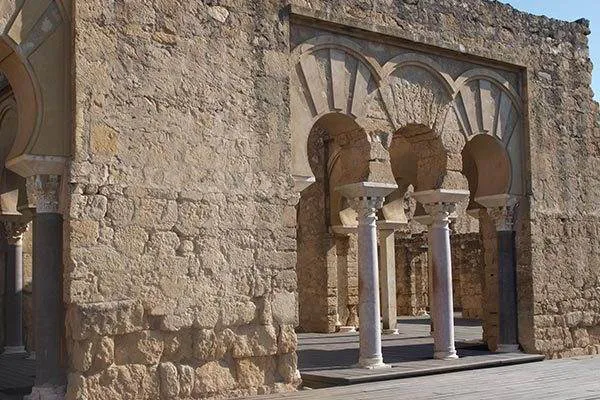

Madinat al-Zahra
In 929 AD, Abd ar-Rahman III declared himself ‘utterly independent’, the true Caliph (Prince of Believers – effectively ruler of the Islamic world) and direct descendant of the Umayyad dynasty.
The Umayyad dynasty had almost disappeared the previous century due to the predations of a rival dynasty, the Abbasids. Abd ar-Rahman’s declaration finally consolidated his power in the Iberian peninsula after seventeen years of conflict with rebels within the Moorish held lands and he thereafter turned his attention to wresting control of North Africa from the Fatimid dynasty.
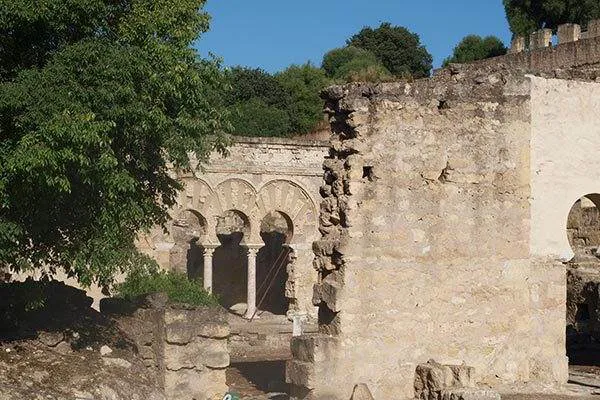
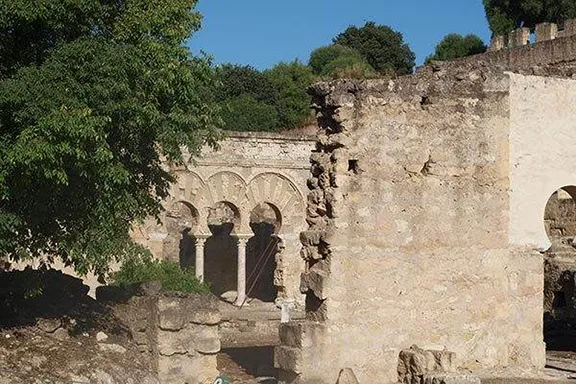
Madinat al-Zahra
It was time to make a statement to impress his legitimacy on the world and he did that by making a series of political, economic and ideological measures and by building a city.
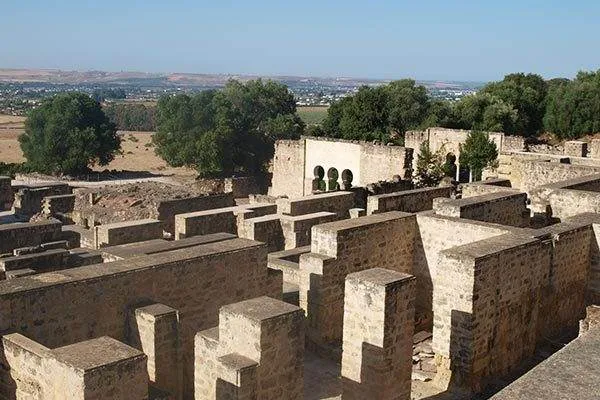

Madinat al-Zahra
Building started between 936 and 940 on a 115-hectare site in the foothills of the Sierra Morena overlooking the Guadalquivir river, just downstream of the city of Córdoba, then the centre of government. The mosque, which bore a close resemblance to the Great Mosque of Cordoba was consecrated in 941 and in 947 the government was transferred from Córdoba.
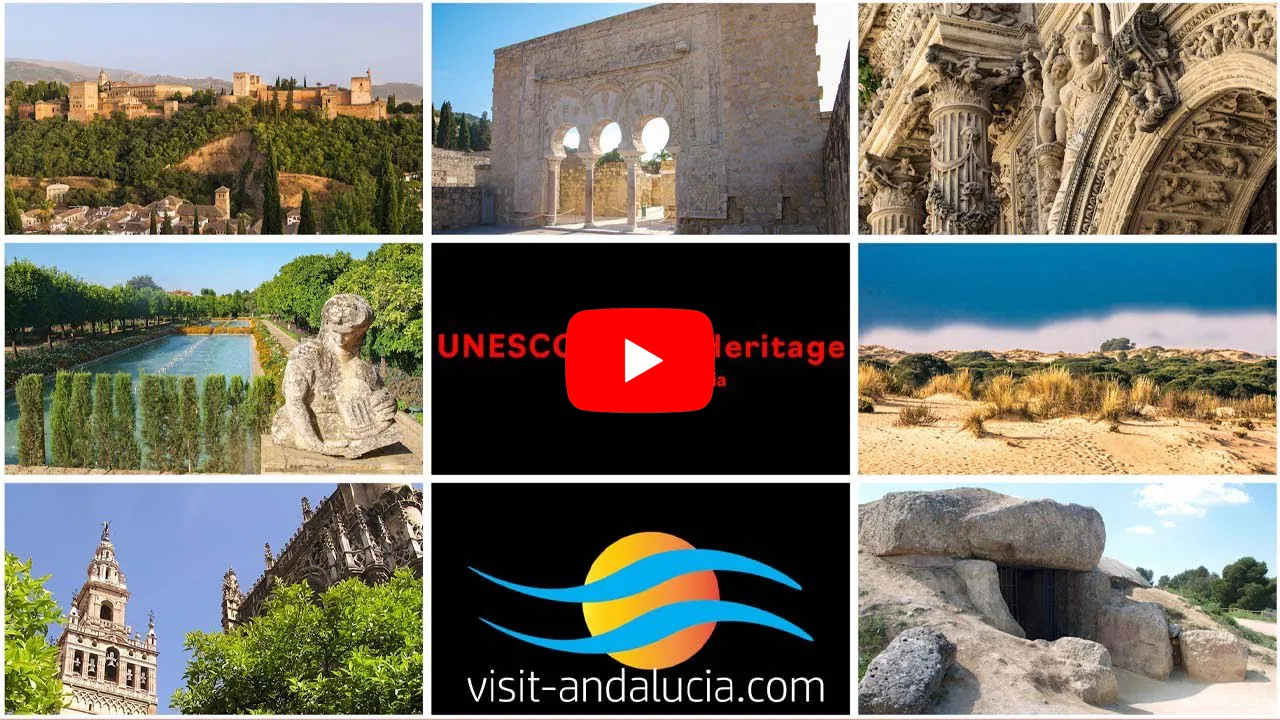
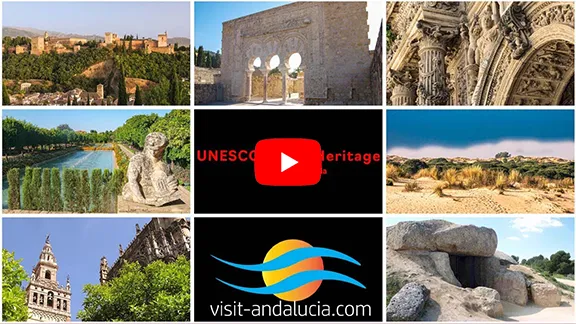
Video By: Julie Evans

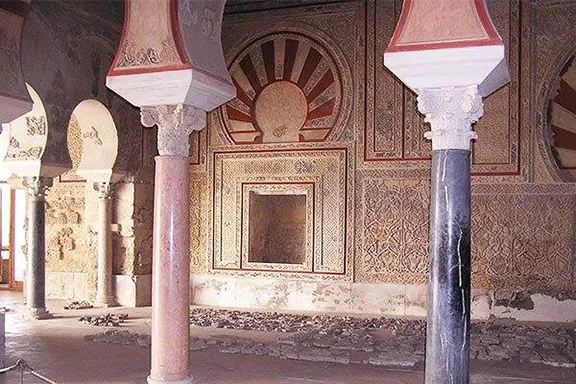
Madinat al-Zahra
The Palace area was completed by 945, in which year the Caliph took up residence.
On the highest level of the city, overlooking the rest, it must have been a magnificent sight, finished with the finest materials and rich in carvings, shining white under the al-Andalus sun. The remaining part of the city was built and rebuilt a number of times and finished about 980.
The Shining City was designed to function as the administrative centre of a country, think of the Houses of Parliament in the UK and the buildings associated and close to it such as the Foreign Office, Treasury, Ministry of Defence and residences for the leaders in Downing Street.
The city also housed a considerable number of troops and all the support staff required by a large working population, secretaries, cooks and servants. For relaxation, there were bath houses and at least three large gardens. The whole was surrounded by a fortified wall.
Some of the features of the city, such as the arranging of suites around a central courtyard or garden and the basilically roofed halls (as opposed to domes) were conceived for the first time, and subsequently became established features of western Islamic architecture.
Abd ar-Rahman III died in 961 and was succeeded by his son Al-Hakam II who reigned until 976. During this period, the palace complex was extended but, soon after his death, the city was inexplicably abandoned.
In 1010, following a civil revolt, the citizens of Córdoba looted the abandoned city of all its treasures and burnt it to the ground. Much of the fine stonework was removed over the succeeding centuries and re-used locally in farm buildings and walls.
Nature took over and the city was buried until its re-discovery in 1910.
Interestingly, some of the artifacts from the ruined city ended up in the Alhambra in Granada, including a richly decorated watering trough that can now be seen in the Alhambra Museum.
Today, only about 10% of the city is excavated and open to the public. There is a very good museum in the valley below the site adjacent to the large car park from where you have to catch a bus to the site itself.
As if one ‘lost city’ were not enough, there is rumour and veiled references to a second, as yet undiscovered, second city, possibly in the vicinity of Madinat al-Zahra.
When Al-Hakam II died in 976, an Arab of noble birth, Al-Mansur Ibn Abi Aamir, was instrumental in making sure the twelve year-old Hisham II was named as Caliph. He is also said to have destroyed Al-Hakam’s collection or library of ‘ancient science’ books.
Two years later, Hisham’s mother, who was regent, appointed Abi Aamir to the position of Hajib, equivalent to a Vizier or Chancellor. To consolidate his power, Abi Aamir is said to have built a palace between 978 and 981 to rival that of Madinat al-Zahra.
Confusingly, he is said to have called it Madinat al-Zahira. Its location is not known. Some say it was opposite Madinat al-Zahra to the west of Córdoba, some that it was on the eastern side of Córdoba.
Ancient texts claim that Abi Aamir kept the young Hisham a virtual prisoner in his gilded palace, effectively ruling al-Andalus in his place. This undiscovered city is supposed to have been razed at the same time as Madinat al-Zahra.
There is a reference to this second city, Madinat al-Zahira, in the archaeological museum at Córdoba but no mention of it at the museum at Madinat al-Zahra.
The staff at the Córdoba museum were asked if they could expand on the single mention of the name.
The consensus seemed to be that a spelling mistake hundreds of years ago sparked off a rumour that grew into a myth... that developed into a fact. A minority seemed to think that the second city was built and that it then became the seat of government, thus explaining the sudden abandonment of Madinat al-Zahra around 980.
There are a few references in history books written much later after the event, but they could equally have been describing Madina al-Zahra or slavishly repeating previous mentions.
The confusion between the two names continues. Even Wikipedia cross-references both spellings, and other travel writers and historians have felt free to use either one, adding to the confusion and mystery.
"The Caliphate city of Medina Azahara is an archaeological site of a city built in the mid-10th century CE by the Umayyad dynasty as the seat of the Caliphate of Cordoba. After prospering for several years, it was laid to waste during the civil war that put an end to the Caliphate in 1009-1010. The remains of the city were forgotten for almost 1,000 years until their rediscovery in the early 20th century. This complete urban ensemble features infrastructure such as roads, bridges, water systems, buildings, decorative elements and everyday objects. It provides in-depth knowledge of the now vanished Western Islamic civilization of Al-Andalus, at the height of its splendour."
Located just 8km west of Cordoba, Medina Azahara is an easy half-day trip from the city centre.
Medina Azahara is open Tuesday to Sunday (closed on Monday). Entry is free for EU nationals. For all other visitors, there is a small entry fee of 1.50€.
If you have a car, you can get there via the Palma del Río (A-431) highway. Exit at the sign for Madinat al-Zahra, by the CO-3414 highway. Parking in available at the reception centre/museum.
You can also get there by public transportation. The Cordoba Town Hall offers a bus service that departs from the city centre. There are typically 3 set bus timings daily. You can catch the bus at the bus stop on Paseo de la Victoria (Red Cross Hospital Roundabout) and on Paseo de la Victoria (opposite the Mercado Victoria).
You have to buy the bus tickets in advance (either online or at Tourist Information Points). It costs 10€ per person for a return trip which also includes a return trip on the shuttle bus at the archaeological site. You'll get about 2.5 hours to explore the site on your own before your return bus to the Cordoba city centre.
No matter what transportation you take, all visitors arrive at the reception centre/museum and must take the shuttle that connects it to the actual archaeological site. There is a separate fee for this: 3€ round trip. The shuttle operates at a frequency of every 15/20 minutes.
A guided tour can help you get the most of your visit to Medina Azahara as you'll get to dive deeper into the history of the site and what remains of it today.
A Medina Azahara guided tour is typically 3 hours long, and you can choose tour options that include transportation for an easy excursion. Here are 2 highly-rated tours to consider:
For more on visiting Cordoba, check out our other articles:
For the opening times of Madinat al-Zahra, click here